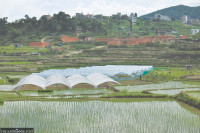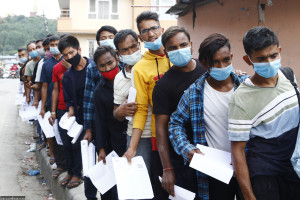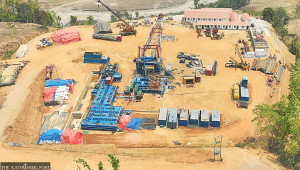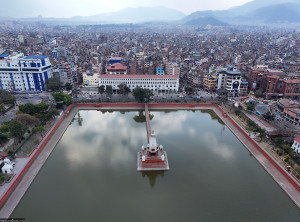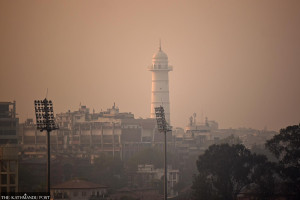Money
Caan’s profit soars but aviation sector’s reputation hits a low
The Civil Aviation Authority of Nepal (Caan) is sitting on a big pile of cash—more than Rs14 billion to be precise—but its infrastructure and service quality are in a poor state, which are hurting the country’s aviation sector and tourism growth potential.
The Civil Aviation Authority of Nepal (Caan) is sitting on a big pile of cash—more than Rs14 billion to be precise—but its infrastructure and service quality are in a poor state, which are hurting the country’s aviation sector and tourism growth potential.
The figure of Rs14 billion includes net accumulated profit of Rs9 billion and Rs5.3 billion collected from passengers as airport development fund (ADF). The ADF is being levied since July 2014 and Caan is not authorised to show this income as profit. The accumulated net profit was generated over the period of 2011-12 and 2016-17 from airport tax and other fees levied on passengers using airport facility. The sole purpose of both the income, however, is to develop airport infrastructure and upgrade services. However, it has remained unspent.
Last fiscal year, Caan had allocated budget of Rs30.8 billion for infrastructure development, but it was able to spend a meagre Rs4.4 billion, or less than 15 percent of the total allocation. Low budget utilisation has hit development of aviation infrastructure. The Caan has barely built any new infrastructure at facilities like Tribhuvan International Airport (TIA), despite a surge in demand for quality services.
The poor performance in budget utilisation is likely to continue this fiscal year as well, according to Caan officials. In November, Caan’s board of directors finally approved a budget of Rs43.6 billion for fiscal year 2017-18. The budget was endorsed after over four months into the financial year due to a bitter boardroom battle. This delay is expected to affect project execution.
“It’s really sad to get hit by a flood of comments on poor infrastructure and services at TIA whenever we travel abroad,” said Tourism Ministry Secretary Maheswor Neupane, addressing the 19th anniversary of the Caan on Sunday. “Where are we in terms of airport infrastructure? It needs to be evaluated seriously,” he said. “The infrastructure development may have been delayed by a number of factors, but we don’t have to wait to improve services.” He said improvement in TIA’s services would address 20-25 percent of grievances of the tourism industry. Pavitra Kumar Karki, president of Airlines Operators Association of Nepal (AOAN), said that airlines had to suffer over 20 percent loss in business last fiscal year as they were hit by delays and cancellations after TIA failed to cope up with the growing number of passengers.
The airlines are bearing the brunt of delays and cancellations because TIA is overburdened. “The airline operators at the airport also face a tough time handling hundreds of flyers, who are irked by cancellations and delays in movement of flights. These days, heated arguments and even brawls are becoming a common sight,” said Karki. “On the other hand, infrastructure bottleneck has also raised the issue of safety.”
Caan’s director general Sanjiv Gautam admitted that reforms have been moving at snail’s pace.
“Our existing infrastructure has not been able to handle the growth,” said Gautam, adding that the regulator is likely to take some unpopular decisions. “We have no choice. At this time, we are incapable of giving permission to airlines to increase their fleet size.” Some officials said that the civil aviation regulator is also mulling over capping the growth of airlines until some infrastructure is developed to cope up with the demand.
TIA witnessed robust growth in passenger and aircraft traffic movement in the first 10 months of 2017 despite infrastructure bottlenecks. According to TIA, aircraft movement of international airlines grew by a robust 26.47 percent to 27,409 flights in the first 10 months of 2017.
The statistics show 3.11 million travellers passed through the country’s only international airport in the first 10 months of 2017, up 9.63 percent year-on-year.
On the domestic front, aircraft traffic grew by 28.40 percent to 75,839 flights in the in the first 10 months of 2017. According to TIA, domestic airlines received 1.99 million flyers, up 41.23 percent year-on-year.




 25.6°C Kathmandu
25.6°C Kathmandu